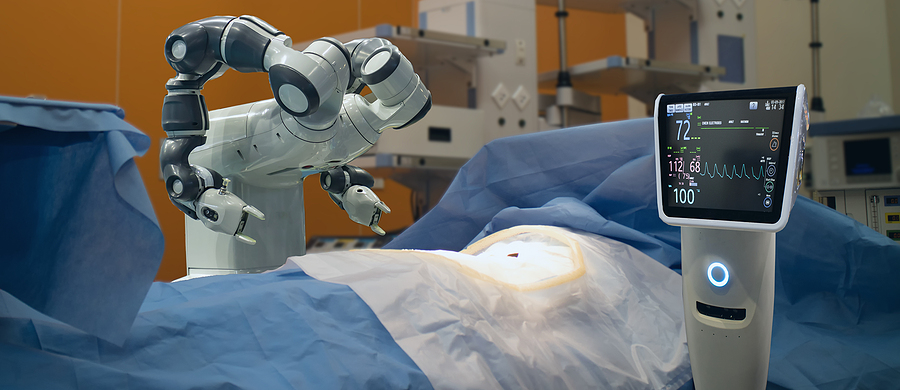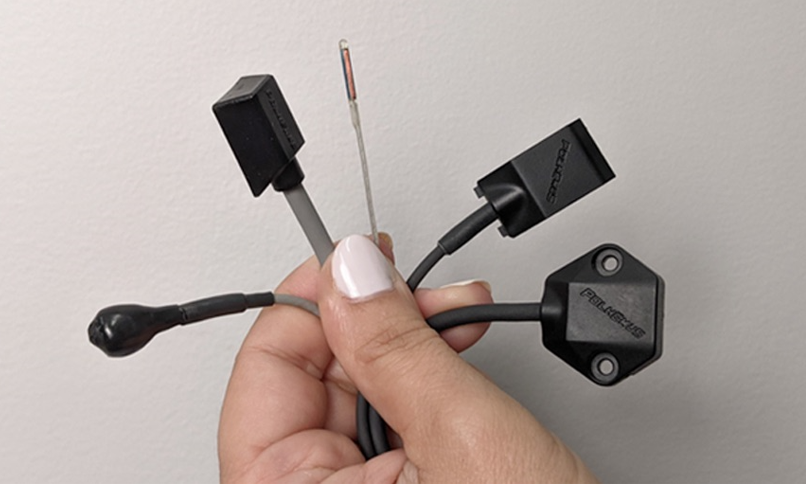Robotic Surgery. The Future of Medicine?
Posted: April 26, 2022

Surgical Robots Act as Extension of Skilled Surgeons
Robotic surgery is the next generation of minimally invasive surgery. This type of surgery involves a computer-controlled robot that assists surgeons during various procedures. Robotic-assisted surgery is commonly used to treat a wide variety of conditions because it’s been shown to incur less complications, minimal scarring, and a quicker recovery for the patient. Robotic surgery also allows for greater visualization, enhanced dexterity, and greater precision for the surgeon.
A surgical robot can enable surgeons to carry out more complex tasks than they would be able to do on their own. Robots aid in the positioning and navigation of surgical instruments and can also allow surgeons to better see the surgical site. Robotic surgery allows surgeons to view 3D images and localization of their instruments (such as a catheter tip) rather than in 2D, which is standard in traditional endoscopic surgery. Surgical robots are not meant to replace surgeons, but rather to act as an extension of skilled surgeons.
Robotic Surgery Emerged in the 80’s? Yes!
Robot-assisted surgery is nothing new, as the idea has been around for over 50 years and started coming to fruition in the 1980’s. Originally designed for use on the battlefield, by 1992, the FDA granted clearance to the first surgical robot. Today, robotic surgery is becoming a staple in operating rooms around the world.
The rapid technological advances of the 21st century have made robot-assisted, minimally invasive surgery (MIS) possible for many different types of procedures. Some common procedures using robots include joint replacements, hysterectomies, prostatectomies, as well as gastrointestinal and cardiothoracic surgeries.
The rapid technological advances of the 21st century have made robotic surgery possible for many different types of procedures
Precision Matters
When it comes to robotic surgery, accuracy is paramount. Motion tracking ensures the robot always moves to the exact location the surgeon desires. High-fidelity tracking technology allows for real-time collaboration between the surgeon and robot by providing continuous position and orientation data of the robot arm.
Polhemus uses AC electromagnetic tracking (also called magnetic tracking), which delivers precision accuracy and real-time 3D orientation tracking for robotic surgery applications. Our trackers also have ultra-low latency, so there’s virtually no lag time between the surgeon’s movements and the robot’s motion. This is critical for the precision and accuracy needed with robotic surgery, especially when done remotely.
Teleoperation—Remote Surgical Procedures
Thanks to teleoperation, robotic surgery can be performed on patients that are too sick to travel to a surgical specialist. Being able to operate on patients within critical timelines will save an immeasurable number of lives. Polhemus enabling motion tracking technology can be integrated into these devices, rounding out the cooperation between surgeon, robot, and technology.
Remote robotic surgery also reduces a surgeon’s radiation exposure since they can be in a different location than the patient. This is especially important in surgeries that require fluoroscopy (essentially a continuous X-ray).
No Cameras Needed. No Line-of-Sight Occlusions

Truth in Numbers
No matter your feelings about robot-assisted surgery, adoption is rapidly growing, and the numbers prove it. Consider just a few common surgical procedures. Robots used in knee surgeries topped 11% of total cases in 2020. Robot-assisted spine surgeries were performed globally in over 20,000 cases as of 2021. With increases in demand, funding, and research, the robotic surgery market is projected to reach $14.4 billion by 2026.
The future of robotic surgery is exciting and we’re proud to have our enabling motion tracking systems be a part of this medical technology that enhances patient care and saves lives. Using Polhemus real-time tracking technology, the movement between surgeon and robot is seamless, accurate, and as natural as possible.
Our goal is to continue to enable our customers to break new ground in the medical device area, including robotics surgery. Is robotic surgery the future of medicine? Only time will tell.
Do you need precision tracking for a robot-assisted surgical device? Contact the Experts in Motion Tracking™ today!
sales@polhemus.com

